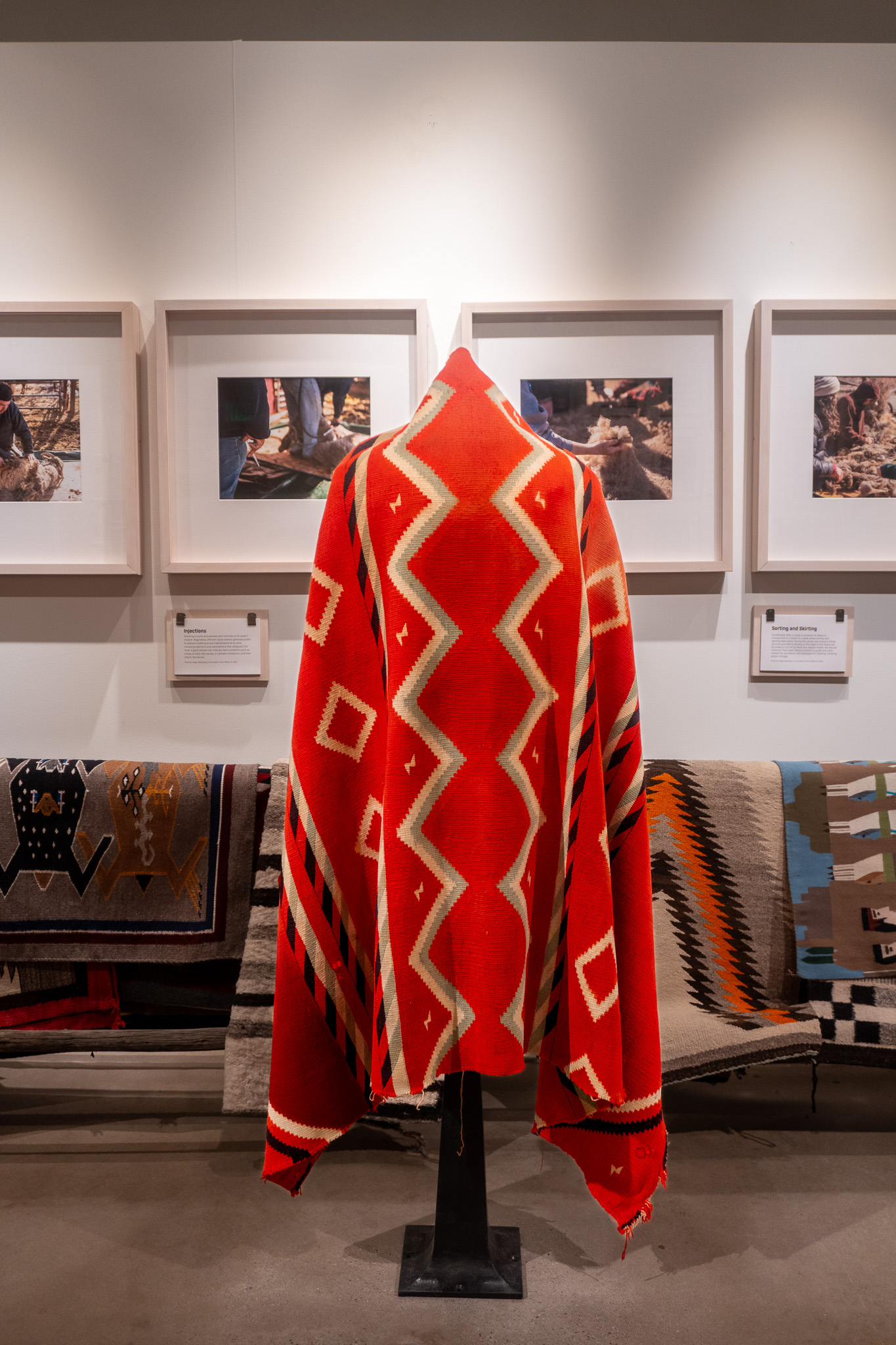“The People’s Tapestry: Weaving Tradition in Navajo Culture” is currently being exhibited at the Moab Museum, featuring a variety of styles of Navajo textiles, as well as renderings of the various ways textiles were used. In this column throughout the summer, the Museum team will feature a variety of weaving styles and their associated backgrounds and stories.
This exhibition is a celebration of the magnificent weavings created by the Diné (which means “the people” in Navajo). The significance of Diné textiles transcends artistic expression; weavers beautify their world through the spiritual act of weaving and integrate their art into the web of everyday life. The Navajo weaver’s song declares, “with beauty, it is woven.”
How are Navajo weavings worn?
Serapes (Spanish for “blanket”) are long, rectangular textiles woven vertically on the loom. Most serapes are woven in simple palettes of red, white, and blue, with yellow and green accents.
The textiles originated primarily from 1840 to 1860. Later period serapes were woven between 1865-1880: serapes woven during this time period, now called the “late classic period,” often feature more complex designs and motifs.
These textiles are believed to have derived from Mexican ponchos, and specifically, from the highly functional Saltillo serapes. Saltillo serapes, documented to have originated with the Aztec in the 1500s, were woven from colorful fibers dyed using insects and fruit. They were believed to bring favor from the gods and ward off evil spirits, and they were worn primarily by men, often while on horseback.
Navajo serapes may have been too delicate for horseback riding, but were nonetheless worn in everyday life by both men and women. Unlike the poncho or the Biil, serapes were designed to wrap around the wearer’s shoulders instead of being pulled over the head. Shoulder blankets such as the serape are otherwise known in Navajo (Diné) as “awos beeldléí.”
Pictured, this men’s serape was crafted from commercially spun Germantown yarn. This yarn was imported from wool mills in Pennsylvania between 1864 and 1910, and was shipped to the Reservation where weavers would buy or barter for it at their closest trading post. These yarns added a broad array of bright colors to their weaving designs.
The Moab Museum is dedicated to sharing stories of the natural and human history of the Moab area. This is part of a series highlighting distinct textiles and styles displayed in the Museum’s temporary exhibition “The People’s Tapestry,” displayed summer-winter 2023. To explore more of Moab’s stories and artifacts, find out about upcoming programs, and become a Member, visit www.moabmuseum.org.




